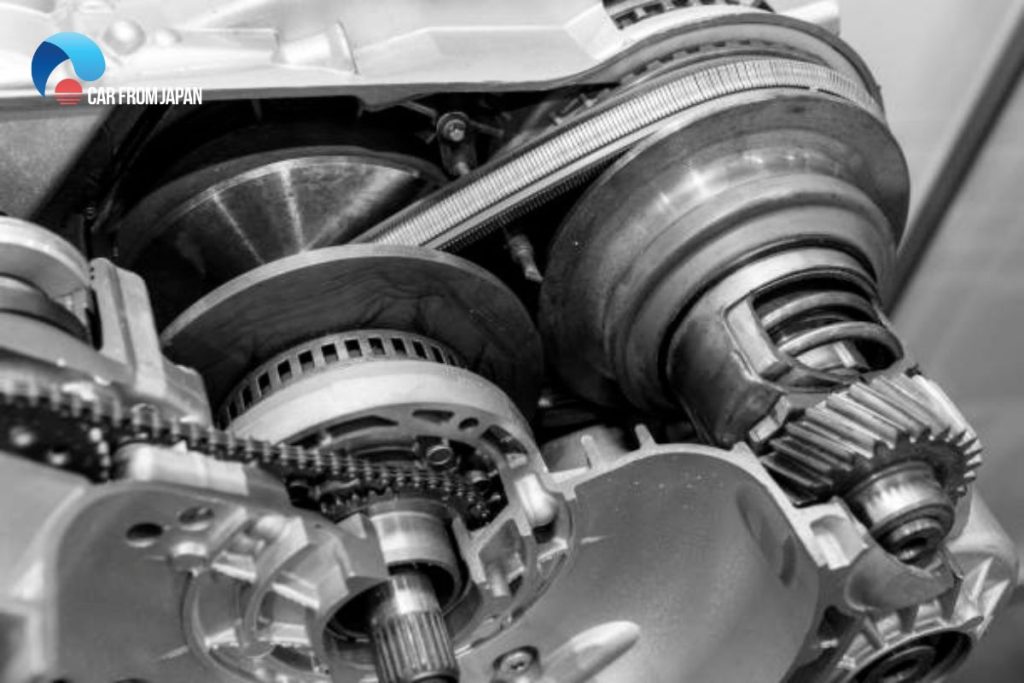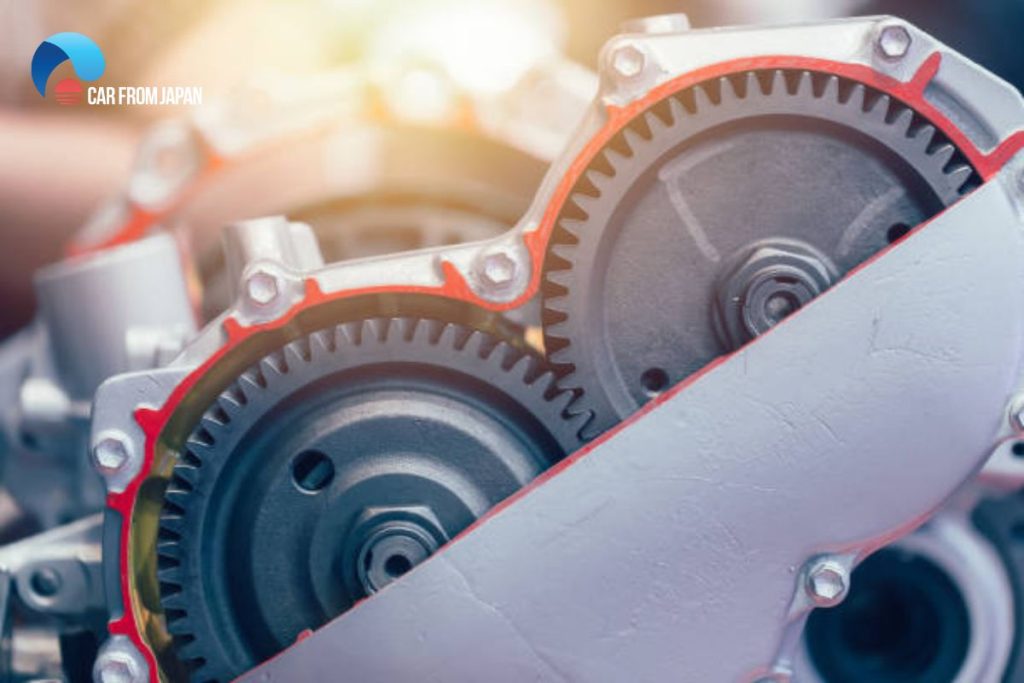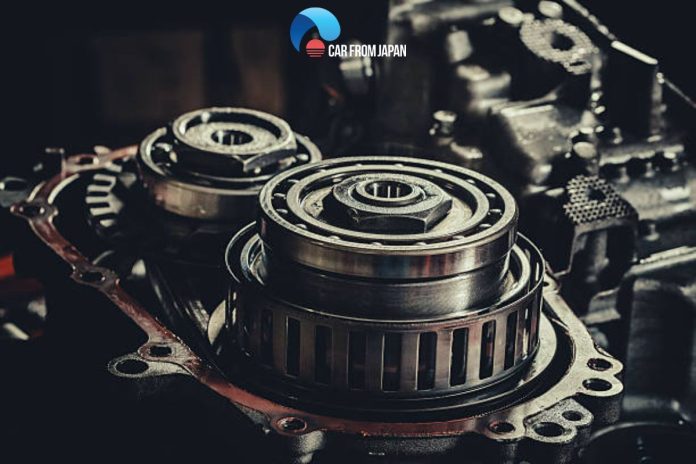Currently, almost every automaker is equipped with CVT (Continuous Variable Transmission) gearboxes for their car models, such as Honda with City, Civic, CR-V, Toyota with Vios, Altis, Corolla Cross, and Raize, Mitsubishi has Outlander, and Hyundai has Creta, Kia Sonet. CVT is the solution to the problem of fuel economy and smooth operation in today’s vehicles. However, besides many benefits for drivers, the CVT also has some drawbacks reported by users during the driving process. So, what are the CVT transmission problems? Let’s find out in this topic:
Contents
Everything About The CVT Transmission
CVT transmissions are widely used on many types of cars, bringing different experiences compared to traditional manual transmissions or dual-clutch automatic transmissions. Instead of using gears, CVT transmissions use metal belts and transmission pulleys. Conventional gearboxes have gears, but CVT transmissions do not have gears or manufacturers can set virtual gears for the vehicle.
CVT transmission does not have gears, so its operation is much simpler than CVT transmissions and automatic transmissions. The structure of a CVT transmission includes 3 main components: A transmission belt made of metal or rubber, a pulley system with a variable input attached to the engine rotation shaft, and an output pulley system connecting to the wheel.

When operating the CVT transmission, always keep the engine at the appropriate rpm range for each specific situation, like an automatic transmission. However, the difference is that the CVT is not limited by engine rpm.
Before finding out about the CVT transmission problems, we will point out some undeniable advantages of using CVT transmissions:
- Lightweight: The structure of the CVT is simple. Instead of using a complicated gear system, this gearbox uses a conical pulley chain connected to a belt. Depending on the vehicle’s speed, the pulley will change position, providing different gear ratios.
- Smooth operation: Thanks to the gearless transmission feature, the CVT transmission allows the vehicle to accelerate steadily and continuously, from standing still until reaching the desired speed. This feature helps stop the “shift-shock” situation when shifting gears in a manual transmission vehicle, providing smoother movements.
- Fuel economy: CVT transmission helps the vehicle consume less fuel than other types of transmissions. Theoretically, the CVT gearbox always puts the engine in a state appropriate to the kinetic energy generated, thereby minimizing fuel consumption. Especially when traveling on the highway at a steady speed, the CVT will come into play, helping the vehicle save significant fuel.
CVT Transmission Problems
Along with the above benefits, a CVT transmission can be one of the viable options if you are looking for a new car. However, you may have heard about the disadvantages (problems) of this transmission when surfing on social networking platforms or forums so what are they:
Noisy sound
Although it has the advantage of being a smooth operation, the CVT gearbox has a weakness: it hangs at high rpm, causing the engine to make noisy sounds. It takes a while for the gearbox to “slow down” the vehicle to catch the torque from the engine and accelerate as desired. Some drivers said that using Nissan’s CVT gearbox causes their car to vibrate, stall, and make unusual noises.

Overheating
It is known that CVT transmissions can experience overheating problems, CVT overheating can occur when there is not enough fluid or the transmission is worn. The problem can also occur if the transmission oil’s information retention is impaired due to faulty oil conversion. The car dashboard will warn if the CVT transmission. If this happens, make sure you stop the vehicle as soon as possible.
Poor load capacity
Unlike other transmissions that give you a sporty, powerful feeling, vehicles with CVT transmissions are often combined with small-capacity engines, more about practicality than conquest. Thereby, the CVT transmission cannot handle high torque, has poor load capacity, and has certain throttle lag.
Slipping
Unexpected vibration slipping is considered one of the main problems of CVT transmissions. Many customers have reported problems such as unusually high engine rpm, jerky behavior when shifting gears, and, more seriously, complete transmission failure.
Costly repair
Although maintenance costs are inexpensive, the repair costs can be more expensive than traditional transmissions. They need to change the fluid sooner, and the transmission belt must also be changed after 50,000 km because it has been under load for a long time. This is also another inadequacy of using a CVT gearbox.
There are several common problems you might experience when driving the CVT transmission. However, not all cars using this type of transmission have the above problem. Many models equipped with CVT gearboxes can give a great experience to the driver. Nowadays, CVT gearboxes have become more complete. Some automakers have proven that this transmission is capable of operating for the rest of the vehicle’s life while requiring less maintenance.
Which Brand of CVT Transmission Is The Most Reliable?
No brand can be sure of being provided the best for CVT transmissions, as each brand has its pros and cons. However, some brands that are highly appreciated for their CVT gearboxes include:
Honda
Honda’s CVT transmission is highly regarded for its reliability and performance. Honda has developed CVT transmission technology on models such as the Honda Fit and Honda Civic and is considered one of the best CVT transmissions on the market.
Toyota
Toyota has also developed many car models using CVT transmissions, such as the Toyota Corolla and the Toyota Prius. Toyota’s CVT transmission is considered reliable, high-performance, and highly durable.

Subaru
Subaru is one of the brands that widely uses CVT transmissions on its models, such as the Subaru Forester and Subaru Outback. Subaru’s CVT transmission is considered reliable and provides good performance.
The information is just for reference. It’s important to regularly service and maintain your transmission to ensure the best performance and longest life of your CVT transmission, regardless of the brand you use.
Watch more:
FAQs
Are all CVT transmissions bad?
No, not at all. CVTs got a bad reputation from some early models that had a lot of problems. Most modern CVTs, especially from manufacturers like Toyota and Honda, are now very reliable. The key is that they are less tolerant of neglect than a traditional automatic.
How long do CVT transmissions usually last?
A well-maintained CVT can easily last 150,000 miles or more, just like a traditional automatic. The lifespan almost entirely depends on whether it gets regular fluid changes with the correct type of fluid. If neglected, they can fail much earlier.
Is it expensive to replace a CVT?
Yes, unfortunately, replacing a CVT is one of the most expensive repairs you can face on a modern car. Because they are complex, sealed units, they are rarely rebuilt. A full replacement can cost anywhere from $4,000 to $8,000 or more, depending on the car. This is why preventative maintenance is so crucial.
Final Thoughts
In the end, it really comes down to one simple rule: take care of the fluid. Most major CVT failures, from overheating to slipping, start with old, worn-out fluid. Modern CVTs are much better than the early ones, but none of them can survive being neglected. Regular maintenance isn’t just a suggestion here—it’s the key to making a CVT last.



